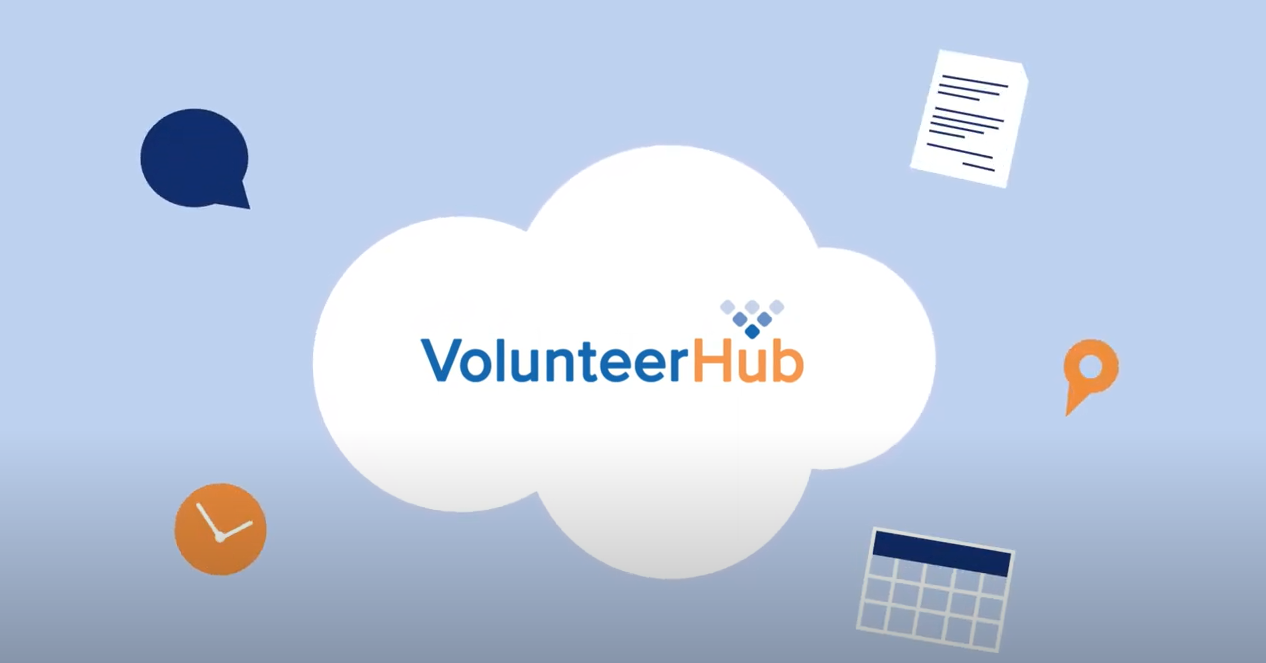Marketing Volunteer Grants to Your Supporters: 8 Top Tips

Your organization probably couldn’t survive without a base of dedicated volunteers.
They work tirelessly to help your nonprofit during projects and events and serve the communities, people, and animals that they feel passionate about.
While some of your volunteers only give their time and do not financially contribute to your nonprofit, you can still receive monetary contributions from them.
Technically, their employers will be donating the money, but the principle is similar.
With corporate volunteer grants, your nonprofit receives the benefit of both a volunteer and a donation.
Corporate volunteer grants incentivize employees who volunteer regularly with nonprofit organizations. Once a certain number of hours has been reached, the company can donate a set amount to the nonprofit. The volunteer is responsible for keeping track of their hours and reporting them to the employer.
But your volunteers can’t take advantage of these types of programs if they don’t know about them.
This is where your organization comes in.
By effectively marketing volunteer grants, you can let your volunteer base know how volunteer grants work, encourage them to submit requests, and reap the benefits of both volunteer time and monetary donations.
Here are eight tips that will help your organization improve marketing volunteer grants to your supporters:
- Include volunteer grant information in your welcoming communications.
- Tell supporters about volunteer grants at events.
- Cover volunteer grants in a newsletter.
- Post about volunteer grants on social media
- Keep track of volunteer hours and promote volunteer grants according to their records.
- Cover volunteer grants on your website.
- Ask about volunteer grants during the signup process.
- Use your acknowledgments to promote volunteer grants.
Let’s get started!
1. Include volunteer grant information in your welcoming communications.
Whenever a volunteer first joins your nonprofit’s team, you want to make them feel as welcome as possible.
Part of this welcome might include an email or letter giving the volunteer some basic information about your nonprofit, the work you do, and what areas require more volunteer support.
Your welcoming communications should also include information about volunteer grants.
The sooner your supporters know about volunteer grants, the more likely they will be to keep up with their hours and submit requests to their employers.
Granted, not all of your advocates will work for companies that reward their volunteerism. Therefore, you don’t need to dedicate a large section of your welcoming communications to talking about volunteer grants.
Instead, you can include volunteer grant information as a sidebar or post-script.
For instance, if you send an email to your volunteers after their first time volunteering, you could include something on the side of the email that says: “Will your employer reward your volunteerism? Ask about volunteer grants and make your time go even further.”
You could use similar verbiage at the end of a letter, after the signature.
When acquiring new volunteers, make sure to select the correct communication tool to share the information about volunteer grants.
2. Tell supporters about volunteer grants at events.
The great thing about volunteers is that your nonprofit gets to interact with them on a more personal level. They attend volunteer days or events and get to see the work your nonprofit is doing.
This direct interaction means that you can fully explain volunteer grants to your supporters.
Whenever you meet with your volunteers during an event, make sure that you at least mention volunteer grants to them. If they have questions, you can answer them at this time. If not, either direct them to more information on your website or tell them to get in touch with their employer.
To explore this further, let’s take a real-life example. Consider Lloyd Claycomb, an advocate for autism education and awareness. As a recent article explains, Claycomb and his wife are not only major donors to the cause, but they’re actively involved in the community and attend a range of related events.
If you were to promote volunteer grants at an event where donors and volunteers like Claycomb are in attendance, you would greatly increase your chances of securing additional funding (and possibly other types of corporate grants).
Again, you won’t need to dedicate a lot of time talking about volunteer grants at events. Mention them at the beginning and end of your volunteer’s day to ensure that the majority of your supporters get the message.
Who knows? You might have someone about to hit their employer’s required minimum hours to be eligible for a grant. Mentioning them at a volunteer event could be the push they need to submit a request.
3. Cover volunteer grants in newsletters.
Your nonprofit’s newsletters are one of the most common ways to disseminate information about your organization. Volunteers and donors alike can learn more about upcoming events, get updates on current projects, and gain a better understanding of your organization, all through your newsletter.
Whether you email or send them via direct mail, you can include information about volunteer grants in your newsletters.
As an example, it would not make sense to reference volunteer grants within a newsletter that’s all about peer-to-peer fundraising. However, it does make sense to talk about volunteer grants in a newsletter that highlights your organization’s volunteer base or your latest volunteer project.
You could even dedicate a whole newsletter to talking about volunteer grants and other corporate giving programs.
The more volunteers are exposed to information about volunteer grants, the more likely they will be to submit those grant requests.
Refer to these programs in your newsletters to give your volunteers as much information as possible.
4. Post about volunteer grants on social media.
This point might only be relevant if your nonprofit has a sizable following on a social media site (it doesn’t make sense to post about volunteer grants until you have a substantial following of volunteers).
But if you do have a social media account that gets significant traffic, you should try posting about volunteer grants every once in a while.
Of course, you shouldn’t make every Facebook post about volunteer grants, but you should incorporate information about volunteer grants into your social media strategy.
When posting about volunteer grants, keep the content fairly brief; you don’t need to give volunteers the ultimate guide to volunteer grants.
Instead, give a quick description of volunteer grants and link out to more information.
You should also incorporate images, graphics, and/or videos where you can. It will help your nonprofit’s posts stand out from the crowd.
Social media is a powerful tool that can help your organization get the word out about various fundraising efforts. Try using it to spread the news about volunteer grants.
5. Keep track of volunteer hours and promote volunteer grants according to their records.
Even though volunteers should report their hours to employers, you can help them by keeping track of their hours with your volunteer management software.
If there are two parties responsible for logging volunteer hours, there is less room for error when reporting those hours to employers.
Additionally, when you know how many hours a particular volunteer has logged, you know exactly when to promote volunteer grants to them.
For instance, let’s say Vickie Volunteer works for a company with a 15-hour minimum threshold before they release a volunteer grant. Because you’ve kept track of Vickie’s involvement, you see that she has volunteered for 14 hours with your organization.
You are now in a great position to send a personal email or letter to Vickie letting her know the status of her volunteer hours and that she will soon be eligible to apply for a volunteer grant.
When your organization and your supporters keep track of volunteer hours, you put yourself in a better position to market and promote volunteer grants to your advocates.
Bonus: Read this article to learn more about reporting volunteer hours to businesses.
6. Cover volunteer grants on your website.
Most of your supporters will access your website (either on their laptops or on their smartphones) to learn more about your organization and the work you do.
First-time volunteers might be looking for information about volunteering for events in the future, while previous supporters might be looking for other engagement opportunities.
Both types of volunteers can benefit from coming into contact with information about volunteer grants.
Your first-time volunteers will become more excited about working with your nonprofit when they realize that the time they spend supporting your cause can also translate into monetary donations.
Your seasoned volunteers will realize that the time they’ve spent with your organization can be supplemented with volunteer grants.
Including volunteer grant information on your website ensures that any volunteer who visits your site will be well-informed about these corporate giving programs.
Bonus: Check out the components of an effective volunteer program.
7. Promote volunteer grants during the signup process.
Whether you’re using software to keep track of volunteer registration or you’re manually registering volunteers during events, you can let your supporters know about volunteer grants.
The signup process is the perfect time to promote volunteer grants to your volunteers. They’re invested in helping your organization achieve its goals and want to be more involved than the average supporter.
Giving them information about volunteer grants during the signup process will keep the idea fresh in their minds. They’ll also know that they need to keep track of their volunteer hours (including the ones they’re about to complete).
Additionally, you’ll be able to centrally store your data and get a better idea of volunteers’ interests and skills.
8. Use your acknowledgments in marketing volunteer grants
You already know that saying thanks is one of the easiest ways to reach out to your volunteers and make them feel appreciated.
But did you also know that you can use your acknowledgments to get the word out about volunteer grants?
Furthermore, did you know that thank you letters and emails are ideal for increasing volunteer engagement and retaining your volunteers?
It’s true!
Acknowledgments are so critically important because they demonstrate that your nonprofit cares about your supporters.
Your nonprofit should only mention volunteer grants after you’ve properly thanked your volunteers.
You can add a brief sentence or two at the end of your acknowledgment that says: “Did you know that your employer might be willing to donate money for every hour you volunteer? Find out if your company offers a volunteer grant program.”
You can also include volunteer grant information on the side of your acknowledgment emails.
Just make sure that your acknowledgment properly thanks volunteers first. Then you can talk about volunteer grant programs.
It’s important to remember that nearly three-fourths of nonprofits partner with corporations to gain more volunteers. If your organization is in this 75%, you should be actively promoting volunteer grants (especially if you know for certain that some of your corporate partners have thriving volunteer grant programs).
Use these eight strategies to optimize the process of marketing volunteer grants, and keep your supporters happy.





